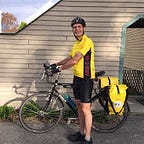Hong Kong Heights
Perspectives from the World’s Most Vertical City
Hong Kong Heights
Everything in Hong Kong is tall and narrow, except, of course, the people. Hong Kong calls itself the vertical city; more people live above the fourteenth floor than below, an odd statistic given that buildings do not have fourteenth floors or fourth or thirteenth or twenty-fourth floors either due to Hong Kong’s knack for assimilating contradictory cultures, including their superstitions.
I am staying on the twenty-second floor of a tower slivered between two older buildings. The building is mostly elevator and stairs; there are three hotel rooms per floor. Only three. My room is not large, but it’s elegant, all clean lines with elegantly resolved details. Every built-in, every control, every latch is integrated. There must be a dozen ways to illuminate the suite. Each fixture is tucked out of sight, only the light is revealed. It is an aesthetic American designers rarely achieve, yet here it is beautifully executed in a moderate hotel.
After sixteen hours in a plane, I want to stretch my legs. I walk the streets in search of a pastry, something with almonds maybe with that almost sweet icing I love at Eldo’s Cake House back in Boston. But Hong Kong cares nothing for Chinese sentimentality. Every corner has a Circle K or a 7/11 or both. Every foodstuff is brightly wrapped, sanitation trumps charm every time. Hong Kong is very clean and scrupulously hygienic. People voluntarily wear face masks after their first sneeze and signs next to door handles proclaim how many times a day they are sanitized.
Americans are not comfortable being close-packed. We avert our eyes on crowded sidewalks. We slither around and through each other without ever touching. In Hong Kong people look right at you, unless they are peering at their handheld, and make no effort to maintain clear space. They do not stay to the right or the left, and when they bump, which is often, they mumble a refrain of ‘sorry.’ Everyone in Hong Kong says they are sorry for everything, just like we say ‘I’m fine’ or ‘whatever.’ It means nothing.
The soul of Hong Kong is money; which means, Hong Kong has no soul. The buildings keep getting higher because Hong Kong is hemmed in on three sides by water and the fourth side by China, and Hong Kong definitely wants to keep its distance from that. Hong Kong is in China but it is not of China. China loves having this economic engine within its realm, it tolerates Hong Kong’s freewheeling excess, but China keeps Hong Kong in check.
I am here to get an expedited visa, a perfect Hong Kong/China scam. I can fly into Hong Kong and stay as long as I like without a visa, but I need one for the mainland. My paperwork, filled out weeks ago in the States, had not made it through the necessary channels in New York, but I can come to Hong Kong and get a visa in twenty-four hours. There are at least a dozen hotels within a three block walk of the visa office, most of them catering to the quick visa trade. But there are almost as many Chinese as Westerners at the visa office. Residents of mainland China have to go through an even more exhaustive review than we do. China doesn’t want its citizens to get too fond of Hong Kong’s bling. It would be like Americans needing to get a visa to visit Manhattan. Hmmmm, don’t give Mayor de Blasio that idea.
Hong Kong is all bling. Block upon block of Cartier and Gucci and Valentino interspersed with immense shopping malls replicating all the same stores. A few hours in the tony districts leave me numb. I escape to Hong Kong Park and the soothing Tea Museum. It is so overcast, the tops of the skyscrapers are lost to clouds, so I forgo riding the tram to Victoria Peak, Hong Kong’s biggest tourist attraction. Instead I wander the Wan Chai district, whose street markets throb with more vitality than any Tiffany broach. I find great street food, Chinese baked goods galore, and enjoy this remnant of Hong Kong’s past much more than its flashy present.
